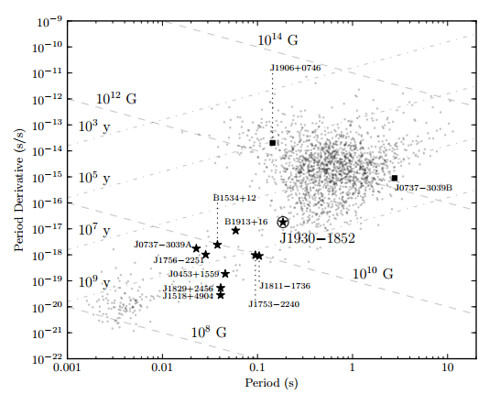Big Bang Monday: Huge Plasma Tubes
Monday, June 1st, 2015When a distinguished but elderly scientist states that something is possible, he is almost certainly right. When he states that something is impossible, he is very probably wrong.
What Sir Arthur said many years ago is certainly true today. So many wonderful ideas come from younger generations of scientists, marketers, writers, etc., that we sometimes forget to open our minds to new ideas and ways of thinking. This was certainly the case in Australia.

As an undergraduate student in astrophysics at Sydney University, Cleo Loi came up with an idea for using radio telescopes to “see” something noone has ever been able to visualize.
Via Fairfax Media’s WA Today…
A Sydney University student has for the first time used radio telescopes like a giant pair of electronic eyes to locate huge plasma tubes in the atmosphere that interfere with astronomy observations and which could affect some civilian and military navigation systems.
Scientists have long thought that the interaction of the earth’s magnetic field with energy from the sun would create huge tubes of plasma. But they have never been able to directly observe them over large scales or determine their shape. Until now.
While still an undergraduate, Cleo Loi, 23, used the Murchison Wide Field Array in the Western Australia desert in a way that no other radio telescope has been used before.
The wide field array consists of 128 antenna “tiles” over a seven-square-kilometre area. Ms Loi divided the array’s tiles into two halves using the western half like a right eye and the eastern half like a left eye. Similar to the way humans use sight, she used triangulation to build a three-dimensional dynamic map of the plasma tubes over a large area.
Ms Loi, who graduated in March, had to overcome the initial scepticism of senior colleagues who thought her observations were too good to be true.
Her undergraduate supervisor, Dr Tara Murphy, said: “It is to Cleo’s great credit that she not only discovered this but also convinced the rest of the scientific community. As an undergraduate student with no prior background in this, that is an impressive achievement.
“When they first saw the data, many of her senior collaborators thought the results were literally ‘too good to be true’ and that the observation process had somehow corrupted the findings. But over the next few months, Cleo managed to convince them that they were both real and scientifically interesting.”
The tubes are in the earth’s upper atmosphere, known as the ionosphere, which largely consists of ionised oxygen. The ionosphere is so called because photons from the sun dislodge electrons from otherwise neutral atoms in this layer of the atmosphere, creating a soup or plasma of electronically charged particles. This plasma interacts with the earth’s magnetic field, creating field-aligned ducts of the plasma.
The free electrons also interfere with astronomers’ observations and can potentially affect satellite navigation systems.









